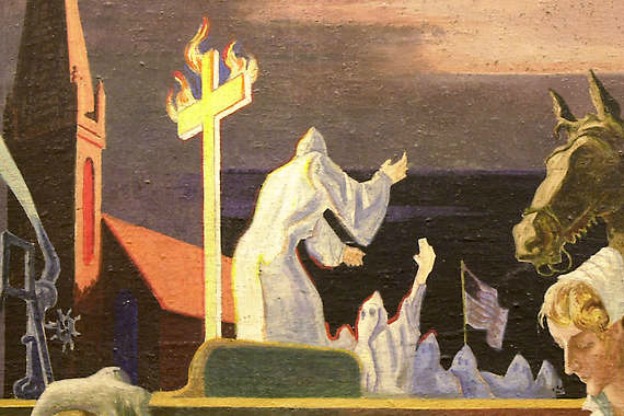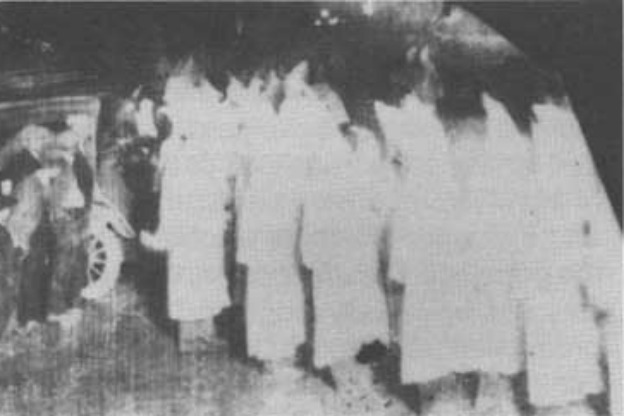 Moment of Indiana History
Moment of Indiana History
Posts tagged Ku Klux Klan
December 16, 2013

Slaying The Dragon
From small beginnings in 1922, the Ku Klux Klan had attracted an estimated thirty percent of all white males in the Hoosier state onto its membership rolls.
October 1, 2012

Worshipping In A Warzone
For a young Catholic boy in a small Indiana town in the early 1920s, attending mass felt like "walking through a battlefield”.
February 28, 2011
![]()
Damage Control for a Painful History
When the Klan announced plans to march through Martinsville in 1967, the mayor successfully banned a parade and residents ignored the Klan’s motorcade.
February 21, 2011
![]()
A Newspaper Man Against The Klan
At a time when the KKK permeated the state legislature, a Muncie newspaperman was waging an editorial battle against the oppressive organization.
February 22, 2010
![]()
Monster Meetings At The YMCA
Even before the founding of the NAACP, an Indianapolis institution came to serve as a crucible for integration.
May 19, 2008
![]()
Bette Cadou
Now known as the voice that announces the start of the Indy 500, Indianapolis Motor Speedway owner Mari Hulman George was barred from checking in on the pit crew servicing the race car she owned back in the 1960s.
February 18, 2008
![]()
No More Beauty Queens
Although race relations on most college campuses in the 1960s were volatile, the Bloomington campus of Indiana University was relatively progressive in attempting to establish civil rights for all of its students. Despite the state’s Southern ties, and the sometime pervasiveness of the Ku Klux Klan throughout Indiana government, Bloomington provided a less hostile environment for blacks than other places in the state.
February 13, 2006
![]()
Ku Klux Klan
The Ku Klux Klan had a resurgence in the early twentieth century. But the Grand Dragon's 1925 conviction ended the Klan's reign.











